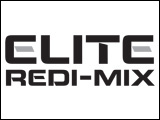A Research Scientist with Alberta Agriculture and Rural Development says the speed with which feed ingredient quality can be assessed using Near Infrared Reflectance Spectroscopy is the main factor driving of interest among pork producers in the technology.
Researchers with the University of Alberta and Alberta Agriculture and Rural Development have developed a Near Infrared Reflectance Spectroscopy calibration to predict barley digestible energy.
Dr. Mary Lou Swift, a Research Scientist Feed Quality with Alberta Agriculture and Rural Development, notes the technology is commonly used within the grain grading system in elevators to evaluate protein and moisture and in many laboratories around the world to evaluate ingredient and forage quality.
Near Infrared or NIR as we commonly call it is a tool actually similar probably to X-rays might be a best way to explain it.
It uses the principles of light energy to indirectly measure the amount of materials like protein, starch, fat, etceteras that are in feedstuffs and forages.
The interest has been spurred on by the fact that NIR is a rapid evaluation method.
Within 30 seconds you can scan a sample of barley or wheat and obtain up to 60 different values so it saves a lot of time in terms of what chemistry and in money.
I think that is really spurring on, especially with the development of specialized equations like digestible energy or digestible fibre that can used to count the pennies I think when it comes to formulating animal feeds.
Dr. Swift observes, now that we have the ability to analyze digestible energy and the word is getting out to pork producers, interest in the technology has grown exponentially.
She notes some estimates range as high as eight dollars per pig that can be saved if energy can accurately be assessed in barley.



